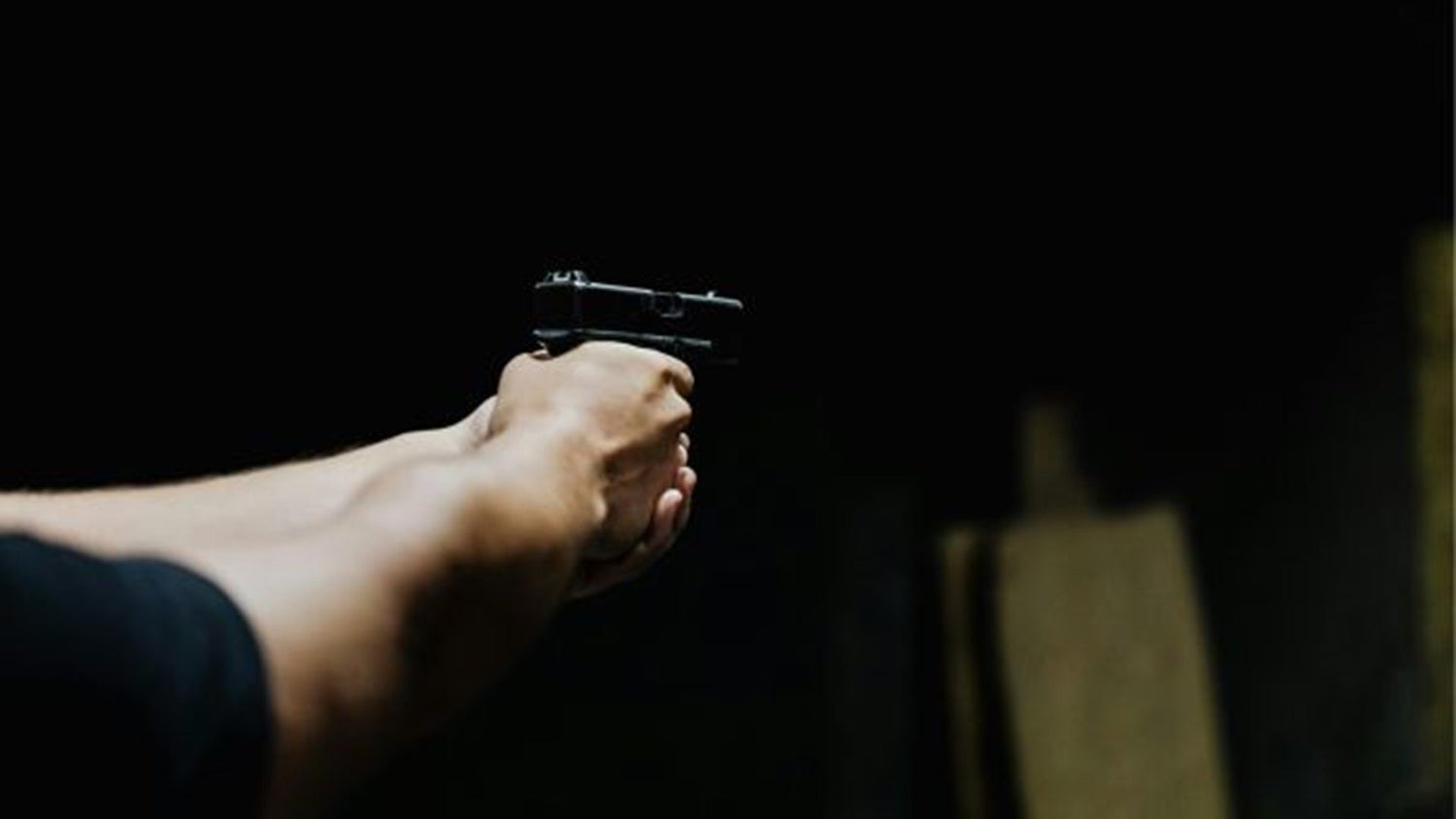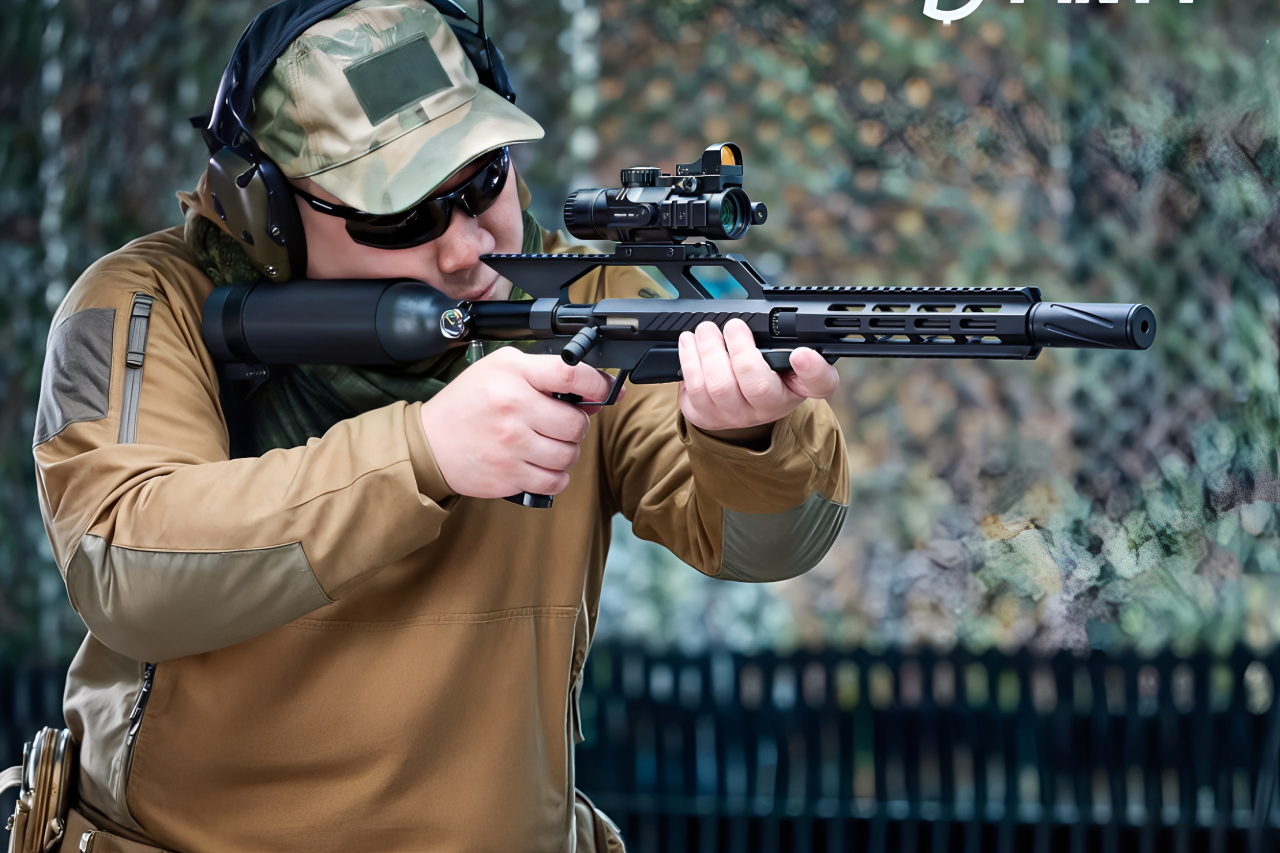It does not matter if you are holding a gun for the very first time or merely refining your technique; mastering how to grip a pistol lays the foundation for safety, control, and accuracy.
A rock-solid grip easily minimizes the impact of the recoil from not just firearms, but air guns as well. Add to that the fact that it reduces muzzle flip to a great extent and allows for faster follow-up shots. Let's walk through the fundamentals of a proper gun grip.
You’ll learn tips on how to extract maximum mileage from various guns, and observe firsthand how even air rifles gain from an otherwise great pistol grip design.

How to Grip a Pistol: Step-by-Step Basics
Getting the optimum pistol grip is not all about holding the gun as hard as possible; it's all about getting that all-important balance, alignment, and, of course, muscle memory.
You should definitely consider following these basic steps to build a considerably more consistent as well as effective hold – one that’s ideal for accuracy and rapid target acquisition:
Step 1: Ensure High Hand Placement
Grip the pistol as high as possible on the backstrap. Doing so will automatically align your forearm with your weapon’s bore axis, thereby reducing that troublesome muzzle flip – even as it improves recoil management.
Step 2: Use a Firm but Relaxed Grip
Your grip should be firm enough to control recoil but not so tense that it causes shaking or fatigue. Think more along the lines of a “confident handshake,” in lieu of a “bone-crushing grip.”
Step 3: Use Your Non-Dominant Hand For Support
Next, wrap your non-dominant (that is, your support) hand all around the dominant hand and fill any gaps between the two. In this case, both your thumbs should always point forward, roughly towards the center of whatever target you are aiming at - with the support thumb resting below the dominant one.
(Note: In shooting parlance, it's known as placing the 'male thumb over the female (shooting hand) thumb.)
Step 4: Maintain Trigger Finger Discipline
Keep your trigger finger indexed (straight along the frame) until you’re ready to shoot. Please note that only the pad of your trigger finger, not the joint, should contact the trigger itself. As in, you should not curve your finger in such a way that the joint rests on the trigger. Rather, the uppermost pad of your index finger should do the needful.
Step 5: Ensure Proper Wrist Alignment
Lock both of your wrists as straight as you possibly can. Always remember, a bent wrist absorbs energy somewhat inefficiently, and doing so might lead to inconsistent shots in terms of accuracy.
This technique applies whether you're handling a semi-auto handgun or a precision air rifle with a pistol grip-like many of Pinty’s PCP models.

Tips for Different Firearms (Including Air Rifles with Pistol Grips)
While conventional pistols require a particular grip for recoil management, air rifles also profit from correct handling, specifically those sporting a highly ergonomic pistol grip. Pinty’s P-Force Tactical .22 Cal PCP Pellet Gun Air Rifle features a unique synthetic stock with an integrated pistol grip, offering shooters enhanced ergonomics and control. Here's how you can apply pistol grip principles to this air rifle:
-
Use the Pistol Grip for Extra Stability: The rifle’s pistol grip allows your dominant hand to maintain a high, secure hold, just like holding a handgun. This improves aim and reduces hand fatigue during extended air gunning sessions.
-
Support Hand on Forend: Position your support hand beneath the barrel's forend (avoid the Picatinny rail section if possible, since the edges might hurt your hand if you grasp too tightly). This provides a firm shooting platform, particularly when standing or kneeling.
-
Consistent Cheek Weld: Although not directly part of the grip per se, combining a firm pistol grip with correct cheek-to-stock fit guarantees sight alignment, which is pretty vital to the rifle's 850 fps accuracy at 30–50 yards.
Since this air rifle has almost no actual or felt recoil, neophytes can also practice honing strictly grip mechanics without flinching-making it a great training gun to learn how to properly grip a handgun.

Beginner-Friendly Activities to Practice Your Grip
If you're new to the world of shooting sports, you might begin with some low-pressure drills to create the kind of muscle memory that will last a lifetime:
1. Try Dry Fire Practice
Practice makes perfect. With an unloaded gun (and cleared chamber), practice your grip and trigger press in front of a mirror. Watch for wrist break or finger placement errors. You can place an object on the muzzle every time you practice – should the object fall, you’ll be able to detect flinch.
2. Grip Strength Training
Use a proper hand gripper: the kind that lets you clench and unclench your grip. Alternatively, you can also use a stress ball (which acts the same way but is far easier to work with) to build forearm and grip muscles as well as endurance. After all, a steady grip always, always starts with strong, fatigue-resistant muscles.
3. Try Air Rifle Target Shooting
Pinty’s pistol-grip-equipped air rifles are deemed to be ideal for your average newbie. The ones with a Picatinny rail accessory attachment system will enable you to run with a red dot or scope while simultaneously maintaining that always correct gun grip.
These exercises build the foundation for how to grip a pistol correctly, whether you’re using a centerfire handgun or a precision air rifle.
Why Pinty’s PCP Air Rifle Excels with Its Pistol Grip Design
Pinty’s .22 Cal PCP P-Force Pellet Gun Air Rifle isn't just powerful, which it definitely is in its own right. It’s also very thoughtfully engineered to ensure the comfort of the shooter. At the same time, it's also very easy to control. Key features that complement a proper pistol grip of this weapon include the following:
-
An Ergonomic Synthetic Stock with its very own Integrated Pistol Grip: Precision designed to fit the hand quite naturally. This way, it will significantly reduce strain and also aid in retuning aim for longer periods of time.
-
It has a Manual Trigger Safety Lock: Ensures extra safe handling during transport and storage. After all, one can't be too careful!
-
Picatinny Rail for Custom Enhancements: You will be able to attach vertical and triangular fore grips. These grips will help with the positioning of your support hand.
For new shooters, this air rifle offers a uniquely safe and affordable – not to mention highly accurate platform. One that will help newbies and experienced enthusiasts alike to internalize the principles of how to properly grip a pistol.
Final Thoughts
It takes a lot more than technique to master holding a pistol. Using a consistent, high, and balanced pistol grip is the foundation of shooting greatness. Whether it's a defensive handgun or one of Pinty's range-friendly pistol grip-carrying PCP air rifles, a consistent, high, and well-balanced pistol grip means tighter groups, quicker follow-ups, and more confidence.
Always remember: Even elite shooters often need to refine their grip since complacency is the enemy of competence. Record yourself at the range whenever you can. After that, you might compare your form to expert tutorials. Juxtaposing the two videos will help you see precisely where you are going wrong.
And if you’re just starting out, consider complementing your pistol training with Pinty’s air rifles to develop your core fundamentals in a safe, cost-effective way. With practice and attention to detail, you’ll not only improve your accuracy-you’ll also enjoy shooting more. Because when your grip is right, everything else simply falls into place!







